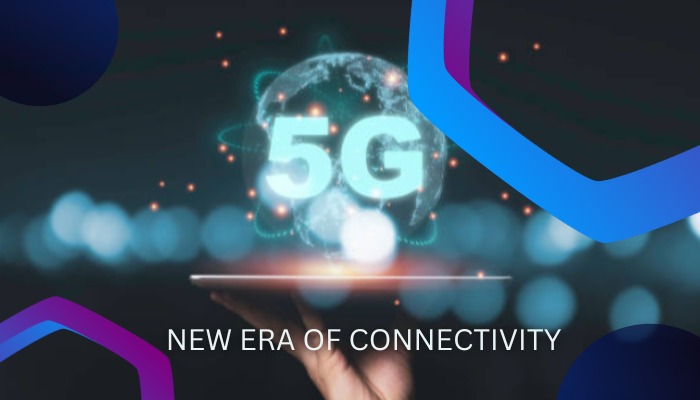5G Technology: A New Era of Connectivity
5G technology is the next-generation wireless communication standard that promises to revolutionize the way we connect, communicate, and interact with the world around us.
5G technology is the next-generation wireless communication standard that promises to revolutionize the way we connect, communicate, and interact with the world around us. Building upon the foundations of its predecessors (1G, 2G, 3G, and 4G/LTE), 5G technology brings forth unprecedented levels of speed, capacity, and reliability, enabling a host of innovative applications and services across various sectors. In this article, we will delve into the details of 5G technology, exploring its key features, benefits, and potential impact on society.

What is 5G Technology?
5G stands for "fifth generation," representing the latest evolution in wireless communication technology. It operates on higher frequency bands, utilizing millimeter waves (mmWave) in addition to the traditional spectrum used in previous generations. These higher frequencies enable 5G to transmit data at significantly faster speeds while accommodating a greater number of connected devices.
Speed and Bandwidth:
One of the most prominent features of 5G technology is its unparalleled speed and bandwidth. With theoretical download speeds of up to 20 Gbps, 5G is up to a hundred times faster than its predecessor, 4G. This tremendous boost in speed ensures seamless streaming of ultra-high-definition content, rapid file downloads, and virtually lag-free online experiences.
Low Latency:
Latency refers to the time it takes for data to travel from the source to the destination. 5G technology drastically reduces latency, achieving response times as low as 1 millisecond. This near-real-time responsiveness is critical for applications that demand instantaneous actions, such as autonomous vehicles, remote surgeries, and augmented reality (AR)/virtual reality (VR) experiences.
Massive IoT Connectivity:
The Internet of Things (IoT) has been steadily growing, connecting various devices and sensors to the internet. 5G technology facilitates the seamless integration of a massive number of IoT devices, enabling smarter cities, industrial automation, and enhanced data-driven decision-making processes.
Enhanced Capacity:
5G utilizes advanced technologies like beamforming and massive MIMO (Multiple Input Multiple Output) to enhance network capacity. These techniques allow 5G networks to accommodate more simultaneous connections without sacrificing performance. As a result, 5G can handle a higher density of connected devices in urban areas, stadiums, and other crowded environments.
Potential Impact on Industries:
The widespread adoption of 5G technology is expected to bring about transformative changes across various industries:
a. Healthcare: 5G's low latency and high bandwidth open doors to remote surgeries and telemedicine services. Medical professionals can remotely control robotic surgical equipment with precision, providing healthcare access to underserved regions.
b. Transportation: Autonomous vehicles heavily rely on fast, low-latency communication to navigate safely. 5G networks can enable real-time communication between vehicles, traffic infrastructure, and pedestrians, reducing accidents and optimizing traffic flow.
c. Entertainment: With 5G's super-fast speeds, virtual reality and augmented reality experiences will become more immersive and interactive, transforming the way we consume entertainment and media content.
d. Manufacturing: Smart factories can leverage 5G's high-speed connectivity and low latency to optimize production processes, enhance automation, and monitor equipment in real-time, leading to increased efficiency and reduced downtime.
e. Education: 5G technology can enhance online learning experiences with seamless video streaming, virtual classrooms, and collaborative platforms, making education more accessible and interactive.
Challenges and Concerns:
While 5G technology holds immense promise, it also faces certain challenges:
a. Infrastructure: Implementing 5G requires extensive infrastructure development, including installing new base stations and upgrading existing ones. This can be costly and time-consuming.
b. Spectrum Allocation: Allocating suitable frequency bands for 5G networks is a complex task, especially with the growing demand for wireless communication.
c. Security and Privacy: With increased connectivity, there is a need to address potential security vulnerabilities and privacy concerns associated with 5G networks.
Conclusion:
5G technology is set to redefine the way we live, work, and interact. Its faster speeds, lower latency, and higher capacity will unlock a new realm of possibilities, revolutionizing various industries and empowering innovative applications. As we continue to embrace the potential of 5G, it is crucial to address challenges and ensure its responsible deployment, paving the way for a connected future that benefits all of humanity.
